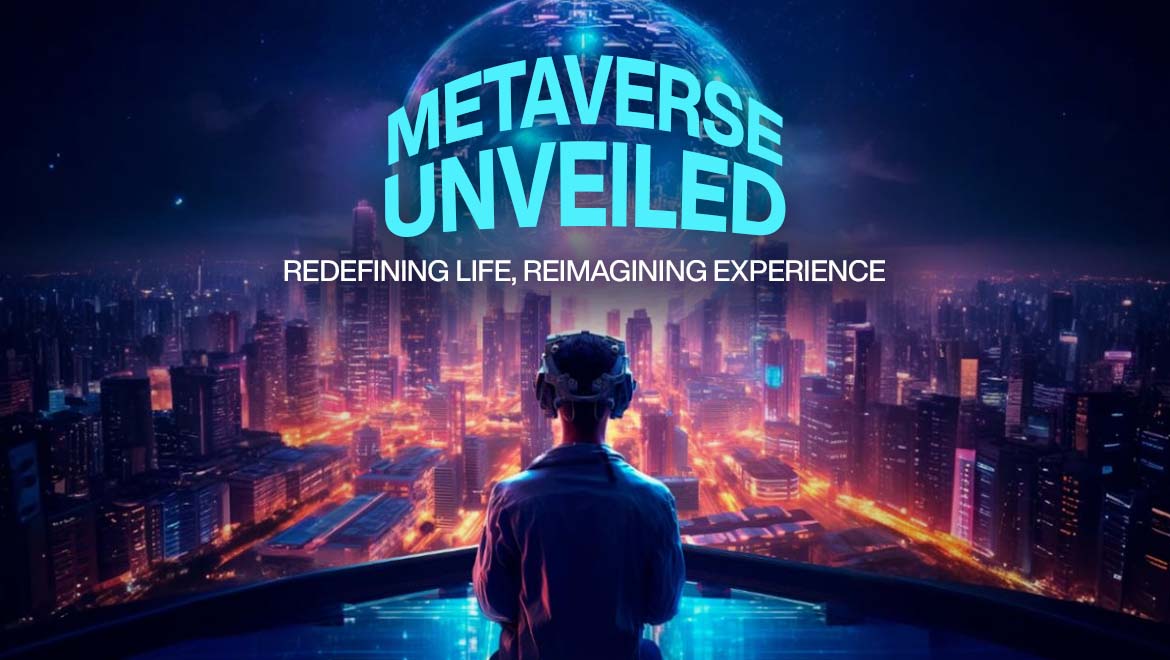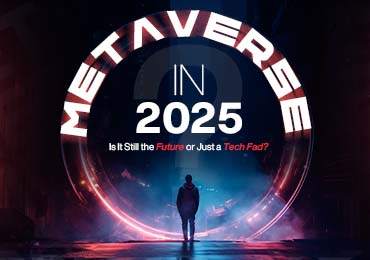

- By By Admin
- 14 June, 2025
- 5 min Read
Metaverse Unveiled: Redefining Life, Reimagining Experience
Let’s join the bandwagon and explore the exciting world of metaverse technology. It’s not just a buzzword anymore—you’ve probably heard the term tossed around in tech talks, news, or even casual conversations. What once felt like a distant, sci-fi dream is now rapidly becoming part of our reality. With tech giants investing billions and industries finding innovative ways to tap into this digital universe, the metaverse is set to change how we connect, work, and play.
But what makes the metaverse so important? And how could it really impact our daily lives? Let’s break it down.
The Metaverse Mystery: A Quick Overview
The metaverse refers to a collective virtual space, which merges blockchain technology, augmented reality (AR), and virtual reality (VR) to create an immersive and interactive digital world.
It serves as a parallel digital universe where people can experience a wide array of activities, including shopping, gaming, working, attending events, and even owning virtual assets through cryptocurrencies.
The metaverse technology is powered by advanced cloud computing, AI, and decentralized networks, ensuring seamless interactions across different virtual spaces. Companies such as Nvidia, Meta, and Microsoft are making significant investments in its development, creating metaverse ecosystems that provide limitless possibilities.
From the digital economy to AI-driven avatars and virtual real estate, the metaverse is increasingly evolving to become the next phase of the Internet, often called Web 3.0.
How Can the Metaverse Impact Your Life?
Wondering how the groundbreaking benefits of metaverse can impact your daily life? Let’s explore –
Work and Business Opportunities
Remote work has already become a new normal, but the metaverse could take it to another height. Virtual offices, collaborative environments, and digital meetings will shrink geographical divides, fostering global teamwork like never before!
Organizations such as Microsoft and Meta are already developing immersive workspaces, making hybrid work mode a lot more productive and engaging.
Social Interactions and Connectivity
Social media will excel, thrive, and evolve into fully immersive experiences. Instead of making video calls or typing messages, you will interact with avatars in different lifelike virtual spaces.
Concerts, events, and even casual hangouts will be a lot more engaging, breaking the monotony of conventional online interactions.
Entertainment and Gaming Revolution
Gaming is at the forefront of metaverse development. Platforms such as Roblox, Decentraland, etc. are already providing immersive digital experiences where users can easily interact, innovate, and monetize digital assets.
The future of entertainment is expected to blur the lines between the virtual and real worlds, providing unparalleled experiences.
Education and Learning Experiences
The metaverse holds immense potential to transform education and redefine experiences. Virtual classrooms, interactive lessons, and 3D simulations will provide students with hands-on experiences beyond textbook knowledge.
Just imagine exploring the advanced solar system in an interactive VR environment instead of reading about it in a book.
Digital Economy and Virtual Assets
Cryptocurrencies and NFTs (Non-Fungible Tokens) have an important role to play in today’s metaverse economy. People can sell, buy, and trade virtual goods, including digital land, art, and clothing.
This opens new doors to new economic opportunities, enabling individuals to earn real-world income through different virtual platforms.
Healthcare and Wellness
Telemedicine will advance in leaps and bounds with the metaverse, enabling doctors or healthcare experts to consult patients in fully interactive virtual clinics.
Augmented reality and virtual reality will reap unparalleled dividends for therapy, medical training, and even treating different mental health issues like anxiety and PTSD through controlled virtual environments.
Some of the Biggest Concerns and Challenges
Despite its immense potential, the metaverse technology comes with some challenges and concerns. Some of them are noted below –
- Privacy Issues: Data security as well as identity protection will be critical challenges.
- Digital Divide: Not everyone has access to the technology required to participate in the metaverse.
- Mental Health Effects: Spending excessive time in virtual worlds might take a toll on real-world relationships and mental well-being.

